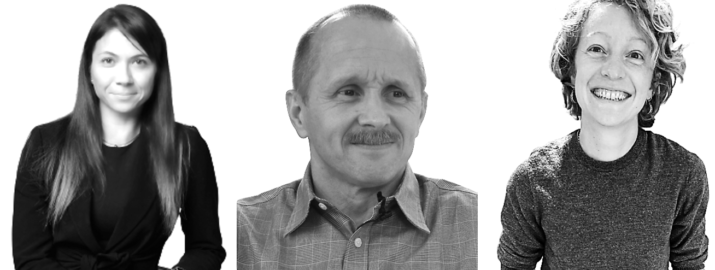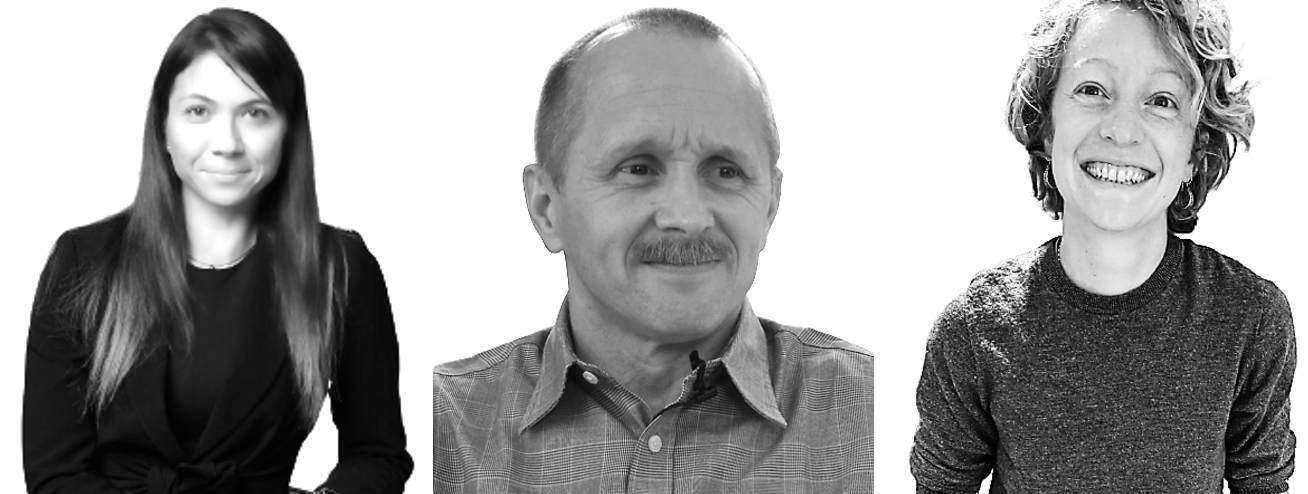
Teaching the Sustainable Development Goals: Challenges and Opportunities: An Interview with László Pintér, Lydia Cole, and Lela Mélon

In 2015, the United Nations adopted the Sustainable Development Goals (SDGs) as a global policy framework that aims “to achieve a better and more sustainable future for all” by 2030. The SDGs replaced the Millennium Development Goals (MDGs), a previous set of goals that were not as comprehensive as the SDGs, since they did not include developing countries, did not focus on primary education, and were less inclusive in scope. In contrast, the SDGs include seventeen goals and 169 targets, and focus on all levels of education, including higher education. The goals are managerial-like, disruptive, and ambitious. They aim at transforming the planet, promising to “leave no one behind” (Agenda 2030). They embody a vision of the future that could be seen as utopic, as they call for humankind to overcome global poverty, protect the environment, improve the quality of education, create global partnerships that work towards the goals, and much more. Because they are so complex, the SDGs have been frequently criticized and questioned. Yet, in spite of their imperfections, the goals clearly aim at creating a global action plan, which may make a real difference.
Among the many stakeholders concerned with the SDGs, universities are key. The relevance of the higher education sector to the achievement of the SDGs is threefold. First, universities represent mini polis. They have their own belief ecosystems, practices, and structures. Universities are actors in many agendas, including the protection of the environment, gender equality, education quality improvement, and so on. Second, universities have a societal role in “the formation of future generations and in the preparation of future professionals, with a view to transition toward sustainability” (Ragazzi and Ghidini 2017, 112). Third, universities are in a good position to establish “partnerships for the goals” with external actors, therefore extending their impact beyond the ivory tower of academia.
Among the SDGs, one central goal for higher education is Goal 4: Quality Education. Goal 4 calls for several improvements. First, it calls for improvements on issues of equal access to higher education. Eliminating gender disparities is a priority. Second, Goal 4 calls for more scholarships for developing countries and mobility for students there. Third, Goal 4 seeks to include sustainable development in educational practices, including in teaching activities at universities that must incorporate “knowledge and skills needed to promote sustainable development” (SDG 4, target 4.7) into their curriculum.
The question of how the SDGs can be incorporated into teaching has been puzzling academics and researchers of higher education. Several publications have addressed teaching the SDGs (Leal et al. 2019; Zamora-Polo and Sánchez-Martín 2019; Kopnina 2018), but overall, little has been written about the experience of academics who teach the SDGs. I spoke with Laszlo Pinter, Lydia Cole, Lela Mélon, who teach in Austria, the UK, and Spain, respectively, to learn about their pedagogical approach to teaching the SDGs. They highlight their motivations for and experiences with teaching the SDGs, as well as the challenges they have encountered when bringing the SDGs to the academic context.
—Maryna Lakhno for EuropeNow
EuropeNow What are the benefits of including the Sustainable Development Goals (SDGs) in your teaching?
Laszlo Pinter The SDGs represent a high-level, globally shared expression of sustainability concerns, priorities, and aspirations. They have strong political mandate, but they are also of interest to science and civil society, so they help galvanize the science-policy-society interface. They represent a common ontology and common metrics; yet, through principles such as Common But Differentiated Responsibilities (CBDR), they allow taking into account contextual specificities. My students view the SDGs not only as something academically interesting, but also as necessary and practically valuable for their career. The SDGs offer a range of benefits. For example, they help make teaching policy relevant, by translating broad theoretical aspects of sustainable development and sustainability into more tangible, time-bound, and thematic details. Further, the goals help focus discussions not only on the substance of the goals, targets, and indicators, but also on the social process associated with their development and use. In terms assessment, the SDGs provide a good basis for assignments and theses focused either on conceptual, strategic, or practical implementation aspects.
Lela Mélon There are two ways of including the SDGs into teaching activities. One is by doing a “mix and match” exercise between the SDGs and the material that is taught around a particular subject. The other is by diving deep into the aims and goals of targets under a specific SDG and analyze how the material studied in a particular course can aid the achievement of these targets. While the first type of activities seems like nothing more than a sophisticated form of greenwashing in the higher education setting, I believe that the second approach is extremely beneficial, as it allows teaching, and simultaneously science, to progress significantly and aid in the creation of a new world where sustainability is the alpha and the omega of our actions.
The substance of the teaching practice and experience shares many characteristics with any sustainable engagement in any context and/or organization, among them a hands-on approach that holistically and organically embeds sustainability (in its environmental and social terms) in the courses concerned. What do I mean by that? The teaching practice itself is active with students spending much of classroom working in groups and individually after having been presented with the basic theoretical underpinnings of applicable sustainable solutions. The exams are based on problem-based learning: the goal is for students themselves to be in direct contact with the challenges and opportunities of sustainable transformation. This approach significantly enhances the teaching and learning process, as it leads students in solving different questions and challenges according to their personal interests and backgrounds. For example, in a course on Sustainable Business Law, we present the general business law framework (at the EU and national level), highlight sustainability-related challenges, and present the corresponding sustainability-related strategies and legal framework. We then attempt to implement practice solutions based on the specific case studies developed in class. The key here is to avoid a “one-size-fits-all” approach and to adapt the course and its contents to the topic in question, as well as to students’ profiles. Mindfulness in content creation and in the teaching exercise itself is key.
Lydia Cole When relevant to the theme of a course, the SDGs can provide a useful structure around which to design a class/lecture. The SDGs necessarily connect all sorts of important issues, structures and institutions in society, and disciplinary and methodological considerations, and can be used in multiple ways. In my own teaching, I use the SDGs to ground themes within a global context and enable students to consider “real-life” applications. But including the SDGs is only beneficial if they are discussed in a critical and engaging way. At my institution, a number of courses are now designed around the SDGs that provide the structure for the lecture series. Therefore, it makes sense for lecturers to, for example, focus on one SDG per class.
EuropeNow How have you incorporated the SDGs into your teaching?
Lela Mélon In my field of study, it is relatively simple to include the SDGs and does not require extra efforts. I teach about the supranational policies and strategies under which the legal frameworks conducive to sustainable corporate behavior are created. These policies are themselves guided by the UN SDG framework, among others, which makes it easy for me to explain existing and upcoming policies and laws, in particular by focusing on the environmental goals (such as Goal 13 Climate Action, Goal 7 Affordable and Clean Energy, Goal 15 Life on Land), as well as those that tackle social sustainability (Goal 5 Gender Equality, Goal 10 Reduced Inequalities). Almost all of my courses are directly related to corporate sustainability, for instance, the Circular Economy course, or the entire Postgraduate Programme on Sustainability Transition).
Laszlo Pinter My course on Sustainable Development and Global Transitions (SDGT) is directly focused on the SDGsand sustainability science, but I also include references to the SDGs in another course called Adaptive Management and Resilience of Socio-ecological Systems (AMR). In SDGT, we cover the SDGs through all stages of the strategic management cycle, from goal conceptualization to target setting, implementation planning, and monitoring and reporting progress, to closing the loop, learning, and adjustment. For the central course assignment, students analyze the implementation status of three targets related to a specific SDG in a specific country, taking into account systemic interlinkages. In the AMR course, besides the obvious relevance of SDG 13, Climate Action, we are discussing how SDG targets and indicators are instrumental for navigating a wider range of sectoral issues to strengthen adaptive capacity and resilience.
EuropeNow What do you do in your teaching practice to face the possible challenges that bringing the SDGs into the classroom brings?
Lydia Cole A number of lecturers may choose to exclude the SDGs from their teaching practice if they do not value the discrete nature of splitting the goals of development. For many academics, justifiably, the SDGs are too disconnected in their focus and do not explicitly (or implicitly) connect with each other. Through their own research, these scholars are very familiar with the multiple trade-offs that need to be considered when working towards achieving positive outcomes for one or multiple goals. A discussion of the trade-offs that are needed for the implementation of the SDGs can be incorporated into teaching, and indeed can provide a useful structure for a lecture course. At the institution where I currently teach, the School of Geography and Sustainable Development at the University of St Andrews, one of the compulsory first year courses for undergraduate students in the major is entitled SDGs: Challenges and Opportunities. The course has been structured around a discussion of the trade-offs experienced in the simultaneous achievement of two or more goals. In my teaching, for example, I have explored SDG 12, Life on Land, and the trade-offs (suggesting some form of compromise to achieve some level of “win-win”) and conflicts (a “win-lose” situation) that arise when SDG 7, Affordable and Clean Energy, and SDG 13, Climate Action, are sought simultaneously. These two goals can lead to the establishment of industrial-scale monoculture plantations to produce biofuels or offset carbon. This form of “development” is not compatible to nurturing healthy terrestrial ecosystems.
EuropeNow At your respective institutions, what is needed to strengthen the focus on the SDGs?
Laszlo Pinter At the Central European University, we need numerous improvements. First, we should identify CEU-specific goals, targets, and indicators. For this to happen, a stronger commitment from the university Board and senior leadership is required. We also need to integrate the SDGs into a wider range of academic programs beyondenvironmental sciences and policy. A possible solution is the creation of a university-wide course.
Lela Mélon At Universitat Pompeu Fabra, more awareness is needed on the fact that sustainability, whether environmental or social, is not separate from science. Rather, we must come to the realization that the concept of sustainability influences science as it represents a shift towards a holistic understanding of the world and its future.
Lydia Cole At St. Andrews, before the SDGs begin to get written into policy and practice across the university, it is important that we truly try to understand and embed them into our individual and common understanding of a “sustainable” future. It is easy for words to become part of our everyday vocabulary without us actually understanding what they mean and how that meaning implicates us. We need to consider, at both individual and institutional levels, as well as in our teaching and research practices, what working towards the SDGs looks like in practice, with an emphasis on integrity, i.e., a consideration of the impact that an action we take will have on one/multiple people, the environment, and the goals of sustainability. This increased awareness and embedding of the SDGs within the university will likely involve a bit of a “chicken and egg” scenario: we need a balance of bottom-up, organic learning and collaboration to understand what our shared goals are, and also some top-down guidance/incentives to provoke these discussions and collaborations. We need to be careful to ensure that the SDGs are not just another fad—or worse, empty commitments—on the road to achieving sustainability. We need conversations to start now, in classrooms and staff rooms, about how to implement the SDGs into teaching, starting at a local level in our institutions. We need to discuss the trade-offs between the goals, try approaches to them that prioritize different factors, and monitor and report progress and failures, from which we could learn. Universities are an important site where thoughtful trial and error processes could take place towards understanding how we can achieve sustainable lifestyles within a steady-state economy.
The SDGs are clearly not an easy framework for universities to incorporate in their practices and going “window dressing” means including academics, administrators, and students. Moreover, while teaching practices vary across countries, subjects, and academic traditions, the SDGs require a unified action across the disciplines, from law to history. Even though the SDGs constitute a global framework, SDGs-related action is required locally. Localizing the SDGs in a university classroom is a challenge, but labor omnia vincit.
László Pintér is Professor and Head of the Department of Environmental Sciences and Policy at the Central European University, Vienna, Austria and Senior Fellow at the International Institute for Sustainable Development. László has been working on sustainable development indicators and strategies, integrated assessments, sustainability reporting and global outlooks for nearly three decades, grounded in the belief that a systemic transition and transformation around the notion of sustainability and resilience is urgently needed.
Lydia Cole is a conservation ecologist with a keen interest in how tropical ecosystems, in particular peatlands, can be managed ‘sustainably’ in the face of agricultural expansion and the other pervasive impacts of globalisation. She is an Associate Lecturer at the School of Geography and Sustainable Development, at the University of St Andrews, in Scotland. She also chairs the Conservation Ecology Special Interest Group of the British Ecological Society.
Lela Mélon is a former Marie Curie Research Fellow with a legal and economics background. She is currently executive director of the Planetary Wellbeing Institutional Framework at UPF and associate professor of Sustainability in Business Law at ESCI-UPF. She specializes in EU law, with a focus on corporate conduct and sustainability, and is currently researching policy coherence for sustainability at EU level, with particular interest in corporate law policies.
Maryna Lakhno is a doctoral research fellow in the Yehuda Elkana Center for Higher Education at the Central European University (CEU) in Vienna. Maryna is also a scientific coordinator of a Higher Education Research Group at CEU. Currently, she is a visiting researcher at Universitat Pompeu Fabra in Barcelona and, in addition to that, Maryna also works as Global History Lab Teaching Fellow at Princeton University.
References
“Transforming Our World: The 2030 Agenda for Sustainable Development | Department of Economic and Social Affairs.” United Nations. United Nations. Accessed April 18, 2022. https://sdgs.un.org/2030agenda.
Kopnina, Helen. 2018. “Teaching sustainable development goals in The Netherlands: a critical approach.” Environmental education research, 24 (9): 1268-1283.
Leal Filho, W., Shiel, C., Paço, A., Mifsud, M., Ávila, L. V., Brandli, L. L., … & Caeiro, S. 2019. “Sustainable Development Goals and sustainability teaching at universities: Falling behind or getting ahead of the pack?” Journal of Cleaner Production, 232: 285-294.
Ragazzi, Marco, and Francesca Ghidini. 2017. “Environmental sustainability of universities: critical analysis of a green ranking.” Energy Procedia, 119: 111-120.
Zamora-Polo, F., & Sánchez-Martín, J. 2019. “Teaching for a better world. Sustainability and sustainable development goals in the construction of a change-maker university.” Sustainability, 11(15): 4224.
Published on May 18, 2022.




